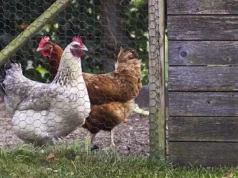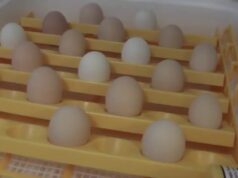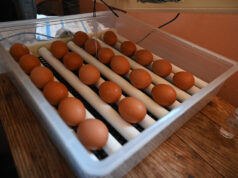Keeping your feathered friends healthy and happy is a top priority for any chicken lover. One vital aspect of chicken care is ensuring that their nesting boxes are clean and germ-free. In this guide, we will explore how to disinfect nesting boxes effectively, ensuring a safe and healthy environment for your hens.

Why is Disinfecting Nesting Boxes Important?
Nesting boxes are where your chickens lay their eggs, and a dirty box can harbor harmful bacteria and pests. Regularly cleaning and disinfecting these boxes can prevent the spread of diseases and keep your chickens laying consistently. A clean nest means healthy eggs and happy hens.
Initial Cleaning Before Disinfection
Before you begin to disinfect nesting boxes, it’s essential to remove all bedding and debris. Sweep out old straw, feathers, and any dirt. This step ensures that the disinfectant will work effectively on all surfaces.
Choosing the Right Cleaning Tools
Having the right tools can make the cleaning process much easier. Use a sturdy brush for scrubbing, a shovel or scoop for removing bedding, and a vacuum for any fine dust and debris.
Materials Needed for Disinfection
To thoroughly disinfect nesting boxes, you’ll need a few key supplies: a safe disinfectant, rubber gloves, and protective eyewear. It’s crucial to choose a disinfectant that is safe for poultry.
Recommended Disinfectants
Consider using a vinegar solution or a commercial poultry-safe disinfectant. Vinegar is a natural and non-toxic option that can kill many types of bacteria.
Step-by-Step Guide to Disinfecting Nesting Boxes
Once your materials are ready, follow these steps to ensure a thorough disinfection:
Step 1: Remove Chickens
Ensure that all chickens are out of the nesting area to prevent any exposure to cleaning agents.
Step 2: Clean the Boxes
With your gloves on, scrub the nesting boxes with a brush and soapy water. Focus on corners and crevices where dirt can accumulate.
Step 3: Apply Disinfectant
Spray or apply your chosen disinfectant, ensuring all surfaces are covered. Allow it to sit according to the product instructions.
Step 4: Rinse and Dry
Thoroughly rinse the boxes with clean water and allow them to dry completely. This step is crucial to prevent any chemical residue from harming your chickens.
Preventative Measures for Clean Nesting Boxes
To reduce the frequency of deep cleaning, consider these preventative measures:
Use of Fresh Bedding
Change bedding regularly to prevent the build-up of dirt and bacteria. Fresh bedding keeps the boxes clean and reduces odors.
Regular Inspections
Inspect nesting boxes weekly for signs of pests or excessive dirt. Addressing issues early can prevent bigger problems down the line.
Benefits of Regular Disinfection
Regularly disinfecting nesting boxes not only ensures the health of your chickens but also improves egg quality. Clean nests lead to cleaner eggs, which are safer for consumption.
Common Mistakes to Avoid
Avoid using harsh chemicals that can harm your chickens. Always rinse thoroughly after disinfecting to remove any residues.
How Often Should You Disinfect?
The frequency of disinfection depends on the size of your flock and the conditions in your coop. As a rule of thumb, perform a deep clean monthly or more often if you notice dirt build-up.
Additional Resources
For more insights into maintaining nesting boxes, visit Nest Boxes Under Roosts and The Best Chicken Nesting Material.

FAQ Section
What disinfectant is safe for chickens?
Vinegar and commercial poultry-safe disinfectants are recommended for cleaning nesting boxes.
Can I use bleach to clean nesting boxes?
Bleach can be used but must be diluted and thoroughly rinsed to prevent harm to chickens.
How do I prevent mites in nesting boxes?
Regular cleaning and using diatomaceous earth can help prevent mite infestations.
This article contains affiliate links. We may earn a commission at no extra cost to you.











